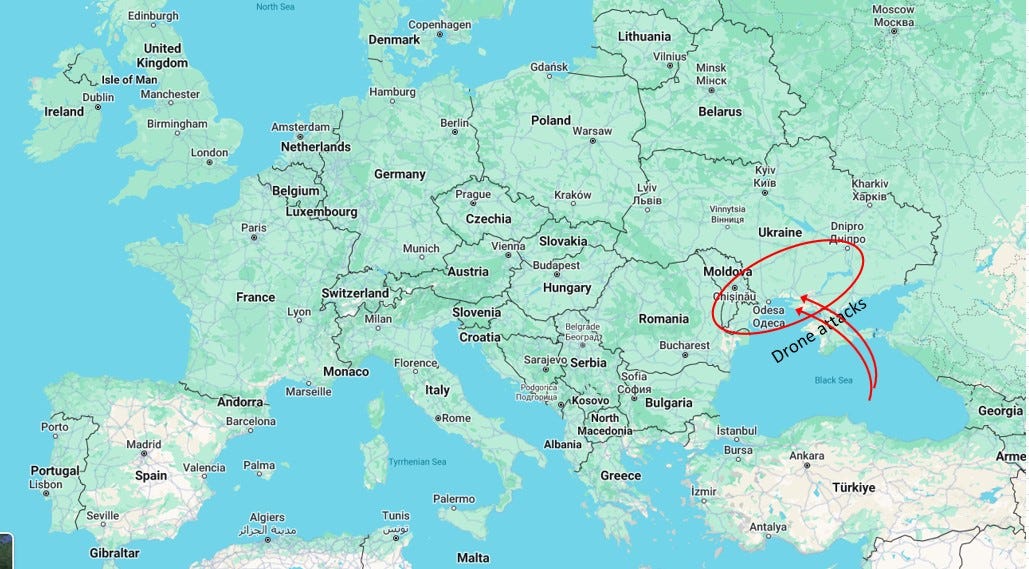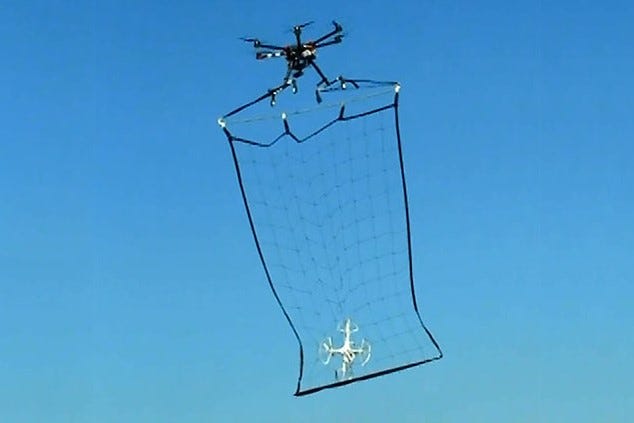There has been much in the news about drone technology. The war in Ukraine and the action in Gaza highlight the importance drones are taking on, in armed conflict. The novel approach to combating drones in Tokyo is perfectly logical and has the makings of a very cool sitcom.
Number 5. MIT Technology Review. Mass-market military drones have changed the way wars are fought.
Two months after the Twin Towers came down, a missile from a Predator drone vaporized high-ranking Al Qaeda-ites in Afghanistan and opened whole new vistas in the art of Politics by Violent Persuasion.
The U.S. would not, of course, sell the hunter-killer technology to emerging economies (which we used to call the Third World) because it was too dangerous. So Turkey began to build their own.
Having perfected the art of making top-quality shotguns with names like CZ, Weatherby and Stoeger, they figured the drones couldn’t be that much more difficult.
The Bayraktar TB2, carrying the name of an Istanbul graduate of MIT, sells for $1 million, not exactly your backyard toy. But it’s U.S. competitor is the Predator at $32 million.
The TB2 produced video of it’s own widespread use in the Second Ngorno-Karabakh War between Azerbaijan and Armenia, the 2020 conflict which of course was discussed over many dinner tables in red-state America. It’s a good thing the Olathe, Kansas, manufactured Garmin GPS (which is also made in China, Taiwan and Switzerland) is so highly useful, inexpensive, accurate and adaptable to airborne application.
And then the Iranians got in the act with their $20,000 Shahad self-detonating drone, which they sold to Russia for use in Ukraine. (Somehow I would expect a drone built in certain parts of the Middle East to be self-detonating.)
The Shahad was cost effective until China saw the market for a DJI commercial drone at $2,000. Photos of the unarmed model, available on the web, are shown with Ukrainian hand grenades creatively taped to the DJI frame.
Or, for the Champagne Terrorist on a Beer Budget, you can order the Chinese kit and build one on your kitchen table. It may be quite useful for the unfriendly neighbor next door.
Number 4. Yahoo News. Ukraine downs 10 Russian drones, debris causes major damage.
The Russian-Ukraine front has moved south in recent days, with Russia targeting Ukrainian locations on the Black Sea coast. A dozen attacks were launched one night this week, most using the aforementioned Shahad drone..
A couple of the units apparently wandered badly off course, but all were successfully intercepted by Ukrainian anti-drone rockets.
The anti-drone rockets cost a lot more than the drones themselves. This monetary asymmetry is not a new phenomenon in warfare. Japan’s Akagi aircraft carrier, lost in World War 2 at the Battle of Midway, cost $36 million U.S. Akagi, plus three other carriers, were sunk in a single day by $38,000 U.S.-manufactured Douglas Dauntless SBD dive bombers.
You get what you pay for.
The delta-wing Shadad model 136 exploding drone will fit inside your garage (8-foot wingspan, 12 feet long) and weighs 440 lbs. Unfortunately, when one was shot down, the debris landed on civilians, killing 3 and wounding others.
Attack drones are dangerous, one way or the other.
Number 3. PetaPixel dot com. Tokyo to catch bad drones using bigger drones with giant nets.
It seems that some anti-social elements are swarming Tokyo with camera-mounted drones. This story is almost 10 years old, but at that time police in Tokyo became alarmed over the sudden increase in civilian drones launched over the city.
Maybe it was not really a problem, but citizens were rightly concerned because of privacy and safety issues. As with Middle East conflicts, and the war in Ukraine, it would not take much for terrorists to launch drones with explosives. Not sure what they’d accomplish with it, but that’s why they are called terrorists.
Where there was a drone problem, there was a drone solution.
Police got larger drones that could carry more weight and equipped them with large nets draped underneath. The attack drones did not have a chance when the rotary wings got trapped in the fabric.
The terrorist solution, of course, will be to find yet-bigger drones with even larger nets to trap the police drones with nets. I am sure there is an arms race to be had here. Chinese manufacturers probably already have the next generation planned.
It is so common, in fact, you can actually purchase a drone net at Amazon. They say they are for enclosures (think of your pickleball court) but there is no reason not to make it airborne.
If nothing else, it sounds like a great police recruiting tool for young gamers.
Number 2. Newsweek. What can law enforcement expect from drones in 2024?
More drone trouble, probably.
Regulations by the FAA and by states have not really kept up with the proliferation of cheap drones. While the uncareful hobbyist can launch his anywhere, police are generally constrained to launch only when an officer is in a position to physically observe the drone during its entire flight.
That would be okay for a practice drill in a big parking lot, but does not do much for an urban location with high-rise buildings.
Crime is not the only problem with drones, of course. At Super Bowl LIII (which was 5 years ago, which I know because this year’s LVIII minus LIII is V, which is 5) there was a near mid-air collision between an unauthorized civilian drone and the US Air Force Thunderbirds.
Now THAT would make the news, no matter how bad the half-time show was.
And, because of the rapid learning curve in armed conflicts in the Old World, we are rapidly closing in on the possibility of drone swarms. The motorized Hamas hang-gliders on October 7 were bad enough, but a couple hundred hand-grenade equipped drones closing in on the Macy’s Day parade could be tough to defend against.
Drone swarms… Michael Crichton wrote about that in Prey. His plot used a swarm of artificially intelligent micro-robot nano-particles that would envelope a person. That was a scary story.
Number 1. PetaPixel dot com. Eagles are now being trained to take down drones.
And at last, a biologically natural solution.
The Dutch National Police engaged a raptor training partner to employ eagles, the top-of-the-food-chain flying predator, to snatch small drones out of the air. No telling what the rotors do to the talons.
Imagine the eagle’s disappointment when he discovers there is no soft and chewy center.
And that is The Alligator News Roundup for Friday, March 1, 2024. I just thought you should be aware of the acceleration in the evil applications of drone technology. So now you know: If you find one, or a dozen, flying toward your backyard, there are a variety of ways to defend against it. I like the flying nets, and I really like the trained eagles. But lacking those, the Remington 12-gauge pump action might still be the best bet. Maybe we’ll do a News Roundup on the best drone-defense shotguns one of these days.
If you like this episode, or if you would just like to share your pain, forward it to someone unsuspecting. Urge them to subscribe, so they can be subjected to the same delightfully irrelevant content that you enjoy so much. Have a good weekend!

















Share this post